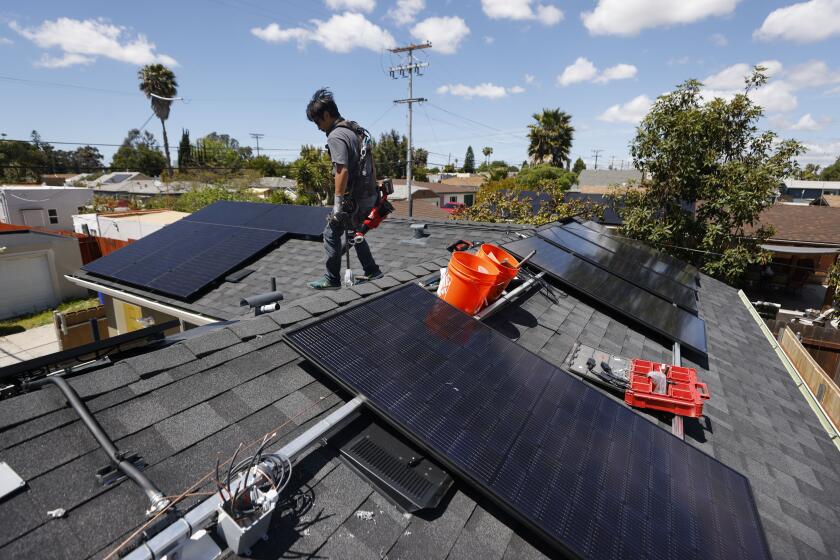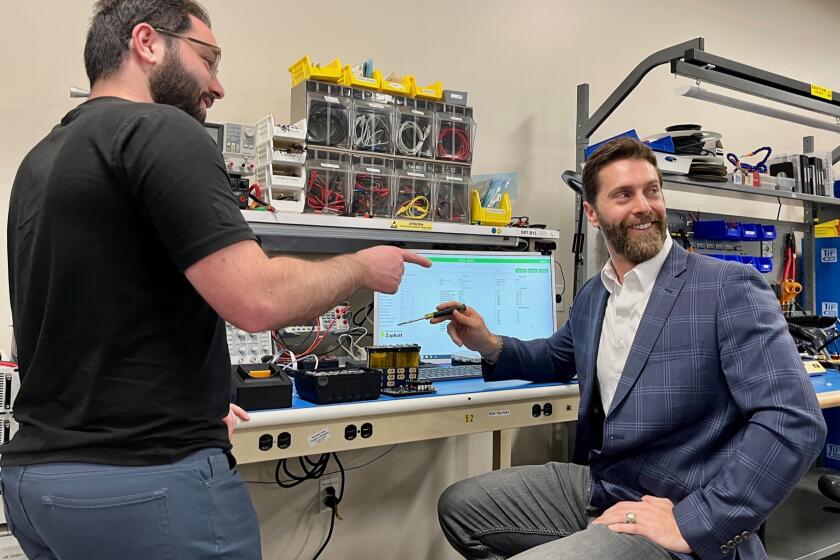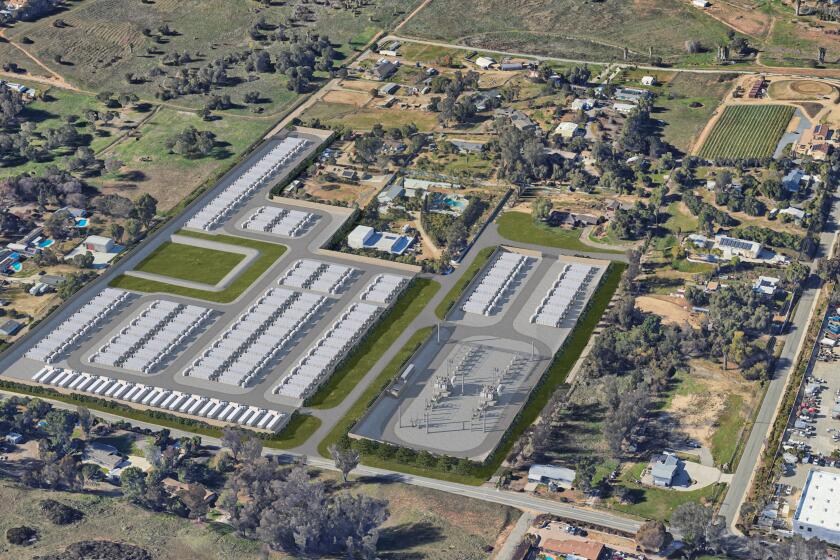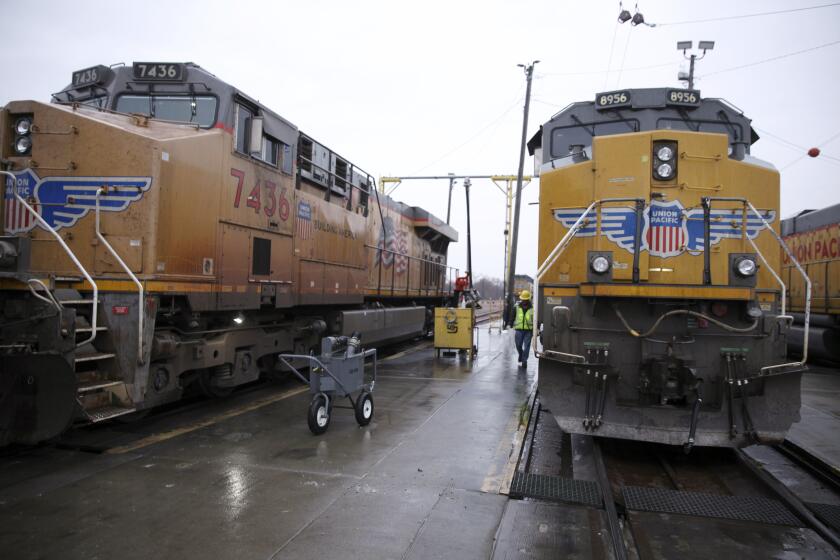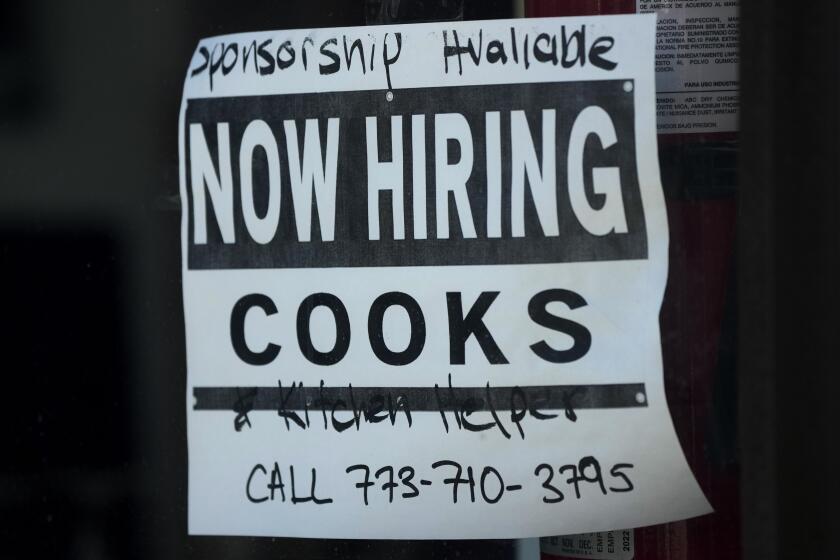California auto sales are rebounding — but you’ll pay more for that new car or truck
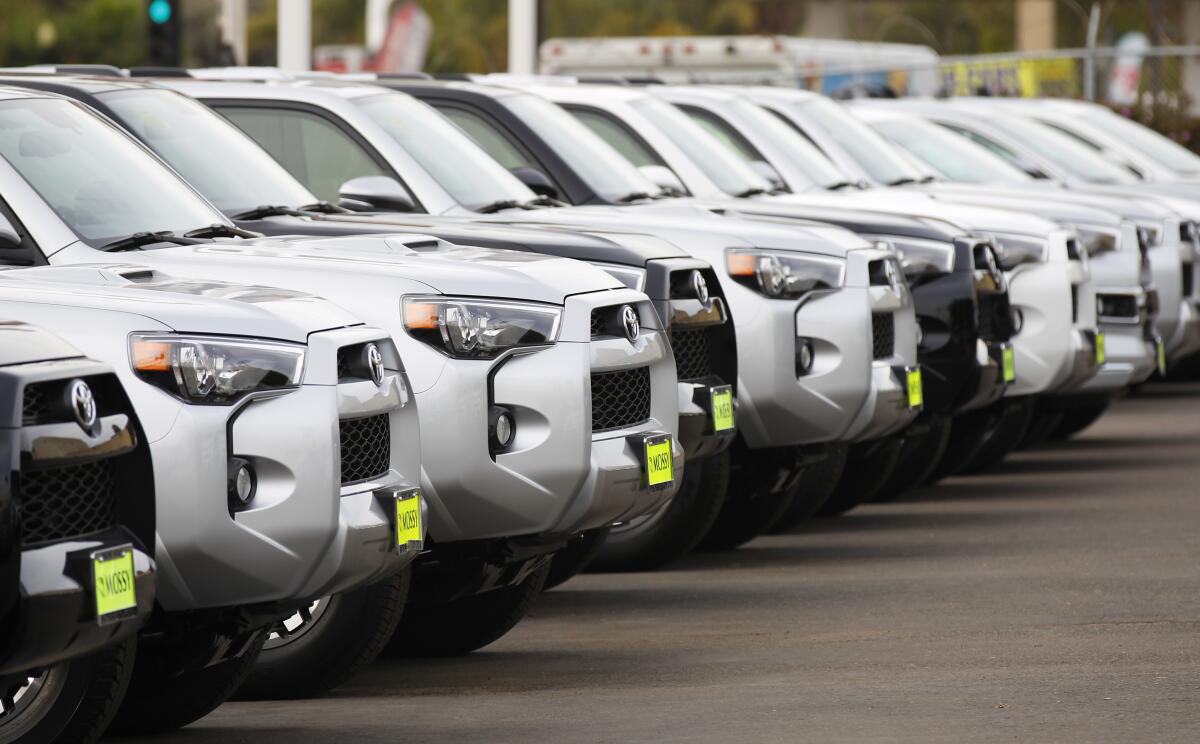
Edmunds research firm says 80.3% of U.S. buyers paid above MSRP last month.
After getting sideswiped by the pandemic in 2020, California’s auto market came back to life last year as sales figures rebounded. But the road ahead is still bumpy as global supply chain disruptions persist, resulting in fewer cars and trucks on dealers’ lots, which means higher prices for customers.
Registrations for new vehicles in the Golden State totaled 1.86 million in 2021, according to numbers released last week by the California New Car Dealers Association. That’s a 13.3 percent increase over the previous year when sales took a nosedive after the implementation of COVID-19 restrictions. In San Diego County, sales were up 16.3 percent.
This story is for subscribers
We offer subscribers exclusive access to our best journalism.
Thank you for your support.
For perspective, registrations for new cars and trucks surpassed 2 million a year from 2015 through 2019.
Economists with the new car dealers association anticipate this year’s sales will increase 3.8 percent to 1.93 million.
Analysts say the figure would probably be higher, given pent-up demand, but the sector has been hamstrung by supply bottlenecks that have fouled up shipping lines around the world.
The pace of increased sales is “certainly not as fast as many of us had hoped, particularly with the lingering Omicron variant of the virus as well as the chip shortages,” said Brian Maas, president of the new car dealers association. “It’s just that the availability of the kind of choices that consumers are used to, it’s just not there right now.”
Modern vehicles rely on microchips that go into things such as brake sensors, power steering, navigation and entertainment systems.
With the economy practically in suspended animation at the start of the pandemic, car sales plummeted. Automakers slashed production of new vehicles and canceled orders for computer chips. But after car sales rebounded faster than expected later in 2020, manufacturers have struggled to get back to the front of the queue.
A series of events — including a COVID-19 outbreak at a factory in Malaysia, drought in Taiwan (water is needed to produce chips) and a fire at a plant in Japan — led to a global microchip shortage, which has worsened due to backups on shipping lines.
As a result, vehicle inventory has shrunk while consumer demand is just as high as it was before the pandemic.
The chip shortage has “really taken down sales and caused prices to skyrocket,” said Ivan Drury, senior manager of insights at the auto market research firm Edmunds.com. “It’s like you took this tiniest domino, flicked it and it’s trickled on down.”
Lack of inventory means buying a new car or truck below the manufacturer’s suggested retail price, or MSRP, is hard to come by. According to data tracked by Edmunds, 80.3 percent of new car purchases in the U.S. in January were sold above MSRP. In January 2019, before the pandemic, the number was just 1 percent.
The average price above MSRP last month was $728, with some models — even in non-luxury brands — seeing markups into the thousands of dollars.
“You’ve got this weird dynamic where you’ve got some people who are willing to pay a lot more and there are other people who are just looking for something cheap that can hold them over,” Drury said. “The problem is, there’s a lot of people out there looking for something.”
The dynamic is so pronounced that some new vehicles are being sold without installing some of the less vital microchips — such as heated seats or wireless charging.
“What that tells me is how significant demand is for consumers,” Maas said. “Five years ago, if you said, ‘I’m going to buy a car that’s missing chips,’ you would have said that’s crazy. But in the current environment, folks are making those calculations and deciding if that works for them.”
Maas said inventories may return to pre-pandemic levels by the start of 2023 but Drury is more pessimistic.
“If you want to go to the dealership and see every color, every option, every single thing you can order on the car ... and you want to see blow-out sales of some kind, you better wait a full two years,” Drury said, “because of there’s so much pent-up demand and so much back-filling of orders.”
California sales in 2021 featured a mix of models and categories. The top-selling vehicle was the Toyota Camry and SUVs such as the Toyota RAV4 continue attracting a large segment of the market.
Sales for zero and low-emission vehicles keep rising across the state, with combined registrations of hybrids and electric vehicles accounting for 23.4 percent of market share.
“People are starting to migrate to those cars,” Maas said. “I suspect we’ll see that number continue to grow, particularly as gasoline prices remain high.”
The Tesla Model Y, Elon Musk’s compact SUV, was the second-best-selling vehicle in California last year and the Tesla Model 3 finished in fifth place.
The inventory shortage kept the used car market hot in 2021, growing 6.7 percent. Tight supplies have made older cars and trucks more attractive, with registrations for 4- to 6-year-old vehicles up 21.6 percent compared to the previous year and 7- to 10-year-old vehicles up 25.2 percent.
The auto market looks much different than it did at the start of the pandemic when dealers had plenty of vehicles on their properties but too many spooked consumers who were nervous about buying a new car.
“We’ve gone from incredible supply overages and now incredible supply shortages,” Maas said, “all in the space of 24 months.”
Top Selling Models in CA for 2021
1. Toyota Camry 61,599
2. Tesla Model Y 60,394
3. Honda Civic 59,818
4. Toyota RAV4 59,157
5. Tesla Model 3 53,572
6. Toyota Corolla 48,915
7. Ford F-Series 46,817
8. Chevy Silverado 44,670
9. Honda Accord 44,576
10. Toyota Tacoma 44,484
Source: CNDA/AutoCount data from Experian
Get U-T Business in your inbox on Mondays
Get ready for your week with the week’s top business stories from San Diego and California, in your inbox Monday mornings.
You may occasionally receive promotional content from the San Diego Union-Tribune.


